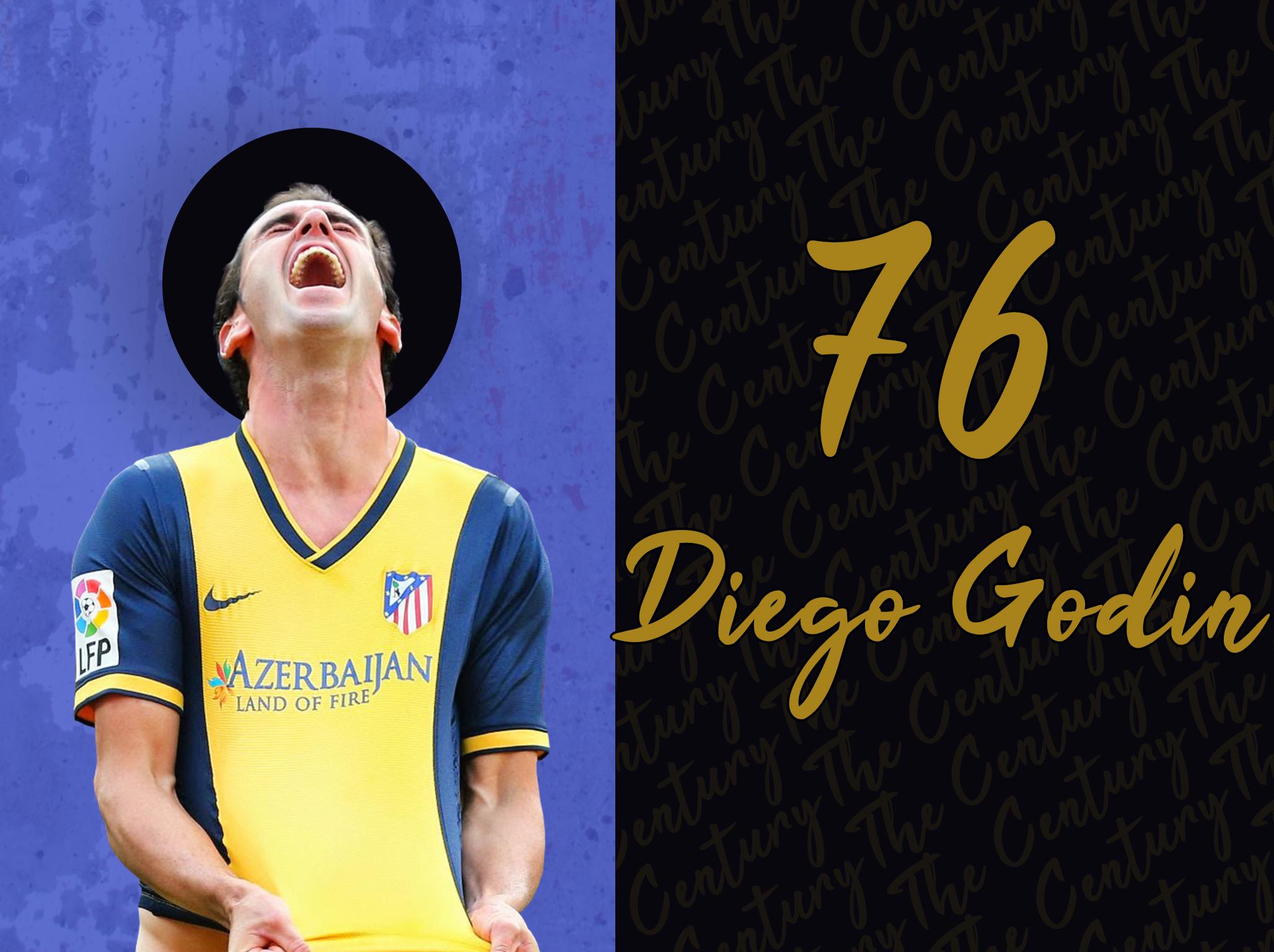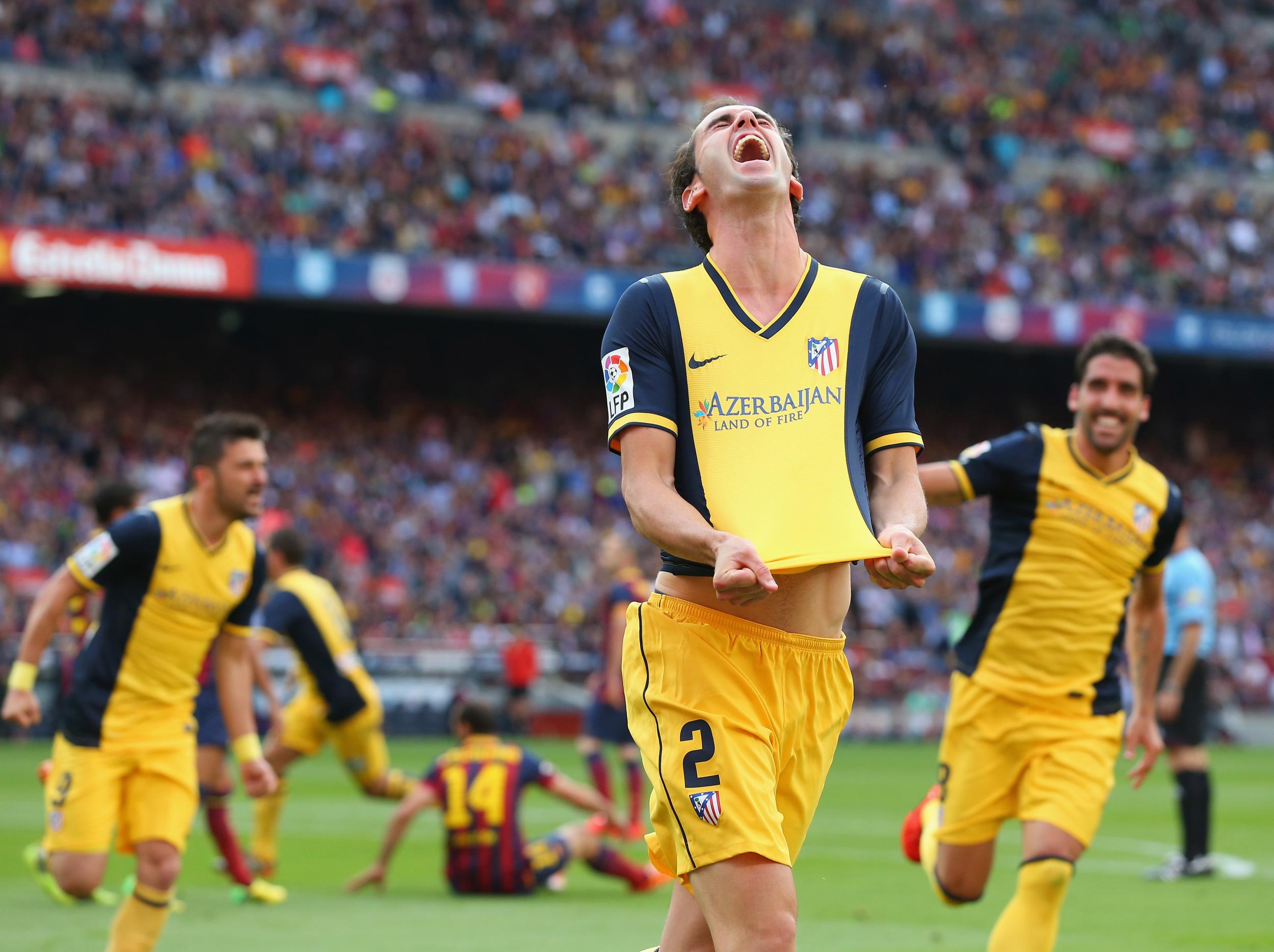Why Diego Godin was a cast-iron defender who single-handedly defied the trends of modern football
The Century: This week, The Independent is counting down the 100 best players of the last twenty years. In at No 76, a defender who was vital to Atletico’s extraordinary La Liga triumph in 2013/14

On 17 May 2014, Camp Nou witnessed what is now undeniably one of the football feats of the new millennium.
It was when Atletico Madrid claimed a 1-1 draw away to Barcelona, on the final day of the season, to clinch the Spanish title. It remains the only time in the last 15 years that a club outside of the Clasico two have become Liga champions, reflecting one of the most far-reaching changes of that millennium. Given those changes, Atletico’s victory wasn’t far off a modern football miracle.
That this victory came through a draw was almost fitting in itself, given it symbolised the defiance that defined their surge, but not as fitting as the scorer – or the manner of it.
In the 48th minute, with Atletico 1-0 down, Diego Godin rose above everyone to absolutely power a header home.
That was the moment. This was the player.
There were no better personifications of Atletico’s entire approach, of their brilliant manager Diego Simeone’s coaching identity.
Having joined in August 2010, Godin was there for all of the club’s resurgence to become one of the most fearsome clubs of the last decade. And that was all the more important since Simeone’s game, and the entire run, was effectively based on the Uruguayan.
His utter dependability at centre-half was crucial to a counter-attacking approach that necessitated – and saw – such classically cast-iron defending, and probably the best backline in the world. You can take your pick of the perfect examples of this. Perhaps the way they – and Godin – just asphyxiated Barca’s attack in the 2013-14 Champions League quarter-finals, or maybe some of the blocks – one especially brilliant one on Thomas Muller – in the 2015-16 Champions League semi-final.
Through that, Godin was not just key to his team defying the trends of the club game. He himself defied the trends of the game itself.
One other far-reaching change of the millennium was the Pep Guardiola-inspired explosion of pressing-possession football, that also saw a very change in the way it was coached. Academies began to produce streams and streams of technically-accomplished universalists. Rawer players with more specialised talents, however, soon became so much rarer – especially at centre-half.
It was why Godin stood out all the more. He gave attackers a problem they just struggled to deal with it. That may have made something of a throwback, but also ensured he was for a long time the very best centre-half in the world.
In that, it is no coincidence a player of such status came from Uruguay. The country’s unique football culture is one of the few places still producing this type of player. It meant that Godin was – literally – at the centre of another of the millennium’s great achievements, as Uruguay reached the semi-final of the 2010 World Cup. He would miss most of their victorious 2011 Copa America through illness, but still has the medal, still played his part.

Uruguay were in many ways an international forerunner to Atletico, as someone from across the river in Simeone brought so many of these qualities together. They were centred around Godin, a defender almost impossible to beat.
Be that in the air, on the ground, through old-fashioned tackling or the most measured positioning, Godin was always there.
Gerard Pique – one of the contemporaries he so often frustrated – described him as “the centre-half of a generation”.
That says it all, and sums it up. That’s how good he was.
The Century
This week, we are counting down the 100 greatest players of the 21st century, revealing 20 per day until the winner is announced on Friday.
We asked 10 of our football writers to select 50 players, with each pick awarded points contributing to a final score.
Join us throughout the week for a wide selection of exclusive interviews and features, as we celebrate the best players of the last twenty years.
Join our commenting forum
Join thought-provoking conversations, follow other Independent readers and see their replies
Comments